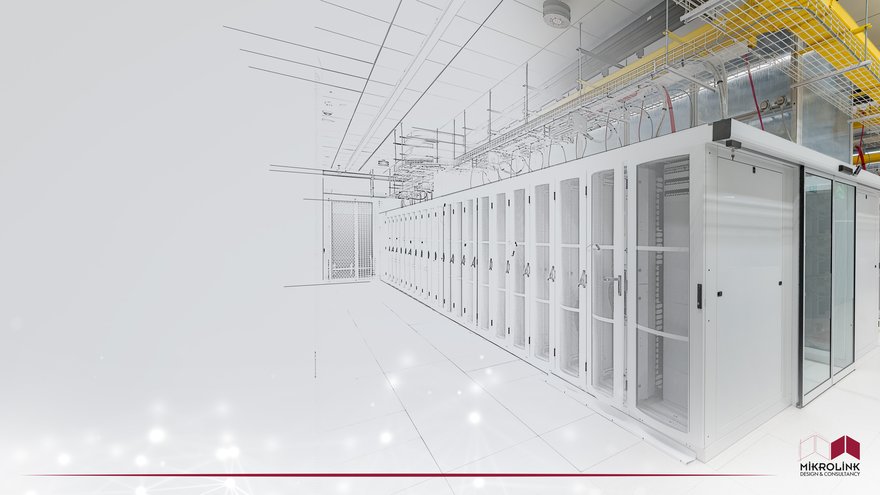In our daily lives, we generate data to meet many of our needs and connect with various institutions. These companies that we're interacting with need huge spaces to store our data, which is why we must act in recognition of the importance of having data centers in almost every geography, particularly in areas where global technology brands are located and continue to grow.
All the institutions that store data, such as banks, medium-sized businesses, and e-commerce sites, need data centers – sometimes they build them themselves, sometimes they rent space from a data center in place. This explains why data centers are such a fast-growing industry all over the world.
These critical facilities are highly specialized because of the information they hold at the forefront, and therefore have a high level of security, accessibility, practicality, continuity and technology. As such they should be systematically constructed.
An active participant in the data center sector at an international level, Açık Holding is currently implementing end-to-end data center projects. During this work Açık founded Mikrolink Design & Consultancy, based on its vision that the design phase of a data center project, particularly those that require large investments is key.
Bringing the experience gained from activities in three different continents to the design and planning process, Mikrolink Design & Consultancy has the ability to guide the functionality and sustainability of the data center in light of globally accepted standards. This ensures that business objectives are achieved in time, within budget and with the highest efficiency.
When it comes to global standards in data center design, the first and most important are the Uptime Institute's Tier Standards. Data center owners aim to reach a certain level to verify their competence in meeting job demands, and the Uptime Institute is positioned as a global authority in this regard.
With more than 1,700 level certifications in over 98 countries worldwide, the Uptime Institute's Tier Standard Certification is regarded as an industry standard for design, construction, and ongoing operations. A given layer certificate indicates that a data center has achieved a higher level of performance. It also demonstrates the worldwide recognition of data centers by providing a unique mark of excellence to high-performing enterprises.
The Uptime standard includes four types of certificate. Each stage must provide the conditions for its predecessor. These certificates are:
- Tier I: Basic capacity – Serves small businesses. The systems have no electrical or mechanical backup.
- Tier II: Redundant capacity – Backup up to a certain level of power and cooling systems available.
- Tier III: Concurrently maintainable – No shutdowns are required for equipment renovation and maintenance. The power and cooling systems have backups.
- Tier IV: Fault tolerant – Consists of an infrastructure topology with the concept of error tolerance built on Tier III.
Although the difference between the Tier rates seems small, the annual interruption times are 28.8 hours for Tier I, 22 hours for Tier II, 1.5 hours for Tier III, and 26 minutes for Tier IV, according to these rates.
Another important standard, ANSI/BICSI 002-2014, is different from the standards accepted by data centers worldwide and defines the requirements, guidelines, and practices applicable to any data center. This standard for data center design covers the main aspects of planning, design, construction, and commissioning of MEP buildings, as well as fire protection, IT, and maintenance. It is a guide to the design, construction, and operation of the data center. The ratings and reliability are defined by grades 0 to 4 and are approved by BICSI-trained and certified professionals.
EN 50600, an international standard, is a continuously evolving series of international data center standards. Many aspects of this standard reflect UI, TIA, and BCSI standards. The facility scores are based on eligibility grades ranging from 1 to 4. EN 50600-1 generally refers to the construction of buildings, the power distribution, the environmental control, the telecommunications cabling infrastructure, the safety systems, and the management and operational information systems.
Regulatory and operational standards can also enhance the character of data centers and reflect the security situation. The headings vary by project size, including IPPA (Health Insurance Portability and Liability Act), SOX (Sarbanes Oxley) 2002, SAS 70 Type I, Uptime Institute (Operational Sustainability), ISO 9000 (Quality System), ISO 14000 (Environmental Management System), and PCI (Payment Card Sector Security Standard), and include instructions on detailed operations and maintenance procedures for all equipment used in the data centers.
Mikrolink Design & Consultancy, which is working on data center design and planning within Açık Holding, has been producing solutions for data center projects by leading technology companies for some time now. From how the data center's internal environments are organized to how the physical infrastructure systems are configured, all the components to be used comply with global standards and are documented. With a professional team of the best in the industry, Mikrolink Design & Consultancy is dedicated to the long-lasting, efficient, green data centers of the future.

